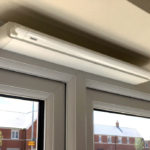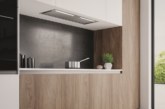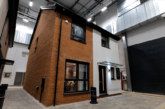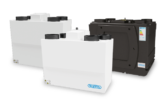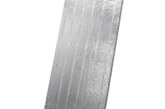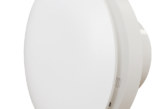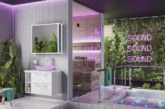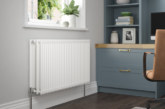
With more homes being built in brownfield and congested areas, residents are increasingly at risk of suffering the unwanted effects of noise pollution. Tyson Anderson, Sales & Marketing Director at Titon, explains how more advanced sound attenuating or ‘acoustic’ background ventilation can help alleviate this issue.
Unwanted noise is a nuisance, especially when people have to experience it inside their own home. In fact, according to the World Health Organisation (WHO), exposure to noise presents the second largest health risk to the population of Western Europe, second only to poor air quality. Serious words indeed, yet housebuilders and developers can play a key role in the management of noise, especially if they consider acoustic ventilation.
Reducing noise levels inside a property is difficult to achieve while simultaneously attempting to achieve the necessary amount of background or extract ventilation. As ventilation requires a hole (or holes) to be provided in the fabric of a building, this increases the likelihood of external noise reaching the occupants inside.
Given that more properties are now being built in city centre locations, near busy roads or other noisy environments, there is increased demand for sound attenuating products. However, these still need to meet design ventilation requirements in terms of allowing air into a dwelling – which then naturally allows noise in at the same time. It is almost a ‘Catch-22’ situation.
Sound attenuation
From a window hardware perspective, there have been significant developments in sound attenuating (or ‘acoustic’) background ventilators. The best quality sound attenuating vents – such as Titon’s own SF Xtra Sound Attenuator – have been designed to keep external noise down to more acceptable levels, while still providing sufficient air flow in accordance with Part F of the Building Regulations for ventilation. Such products form part of a ‘system one’ ventilation strategy, encompassing extract fans and background ventilator products but can also form part of a central mechanical extract system.
As a result, a number of ventilator manufacturers now offer products claiming to be ‘acoustic vents’, often pricing them at a premium over their standard units. However, more often than not, these do not actually offer any improvement in terms of noise reduction while letting air flow as per requirements. The only way to be certain of the performance of sound attenuating vents is by having them checked and confirmed with specialist acoustic consultants. This is due to sound reduction levels being measured differently for trickle ventilators when compared to windows. For example, if a window with a sound reduction of 35dB is used in conjunction with a background ventilator also giving a reduction of 35dB, the overall decrease will be somewhat less than 35dB. And, if multiple vents are required, the level of attenuation will gradually become worse.
Sound attenuator products are a cost-effective method of reducing incoming noise in situations where conventional slot ventilators are unable to assist with acoustic issues. To ensure suitable levels of sound attenuation, the latest acoustic vents can offer sound attenuation via the inner (ventilator) or the outer (canopy) or via both for optimum performance.
Expanding choice
It used to be the case that, in order to guarantee adequate acoustic performance, the size of the vent had to be increased, but advances in manufacturing technology mean this is no longer the case. Acoustic vents are now available for standard 13mm product slots, so can be used in new build and retrofit applications, in either domestic or commercial projects. The latest sound attenuators (such as those made by Titon) can be purchased in a number of combinations based on different sizes of ventilator and canopy. Combinations can be chosen depending on the sound attenuation requirement and can achieve up to Dn,e,w (C;Ctr) = 44 (-2;-3)dB when the vent is open.
Another important consideration when specifying or designing ventilation systems with sound attenuating vents is their equivalent area (EA). Part F requires equivalent areas to be a minimum of 5,000mm2 in habitable rooms to ensure adequate ventilation. As a result, in some circumstances, installing two vents together will be proportionally less efficient for sound attenuation than a single vent. This is a major issue as new build ventilation levels require a large number of vents throughout the dwelling to provide an overall ventilation total.
Central system
Sometimes the best way to achieve the best acoustic performance in new build applications is to consider designing-in a central extract system. Using sound attenuating vents in conjunction with continuous mechanical extraction (CME) units, as part of a ‘system three’ set-up, reduces the EA requirement to 2,500mm2. This has led to CME units being utilised in applications such as new build apartment blocks in city centre locations, where noise can often be an issue.
So, as levels of air tightness continue to improve in line with the Building Regulations, efficient ventilation that integrates sound attenuation will continue to grow in importance. By utilising the right products, while engaging in appropriate dialogue with acoustic consultants, housebuilders and developers can ensure noise pollution is kept to a minimum, balanced with compliant levels of ventilation.

